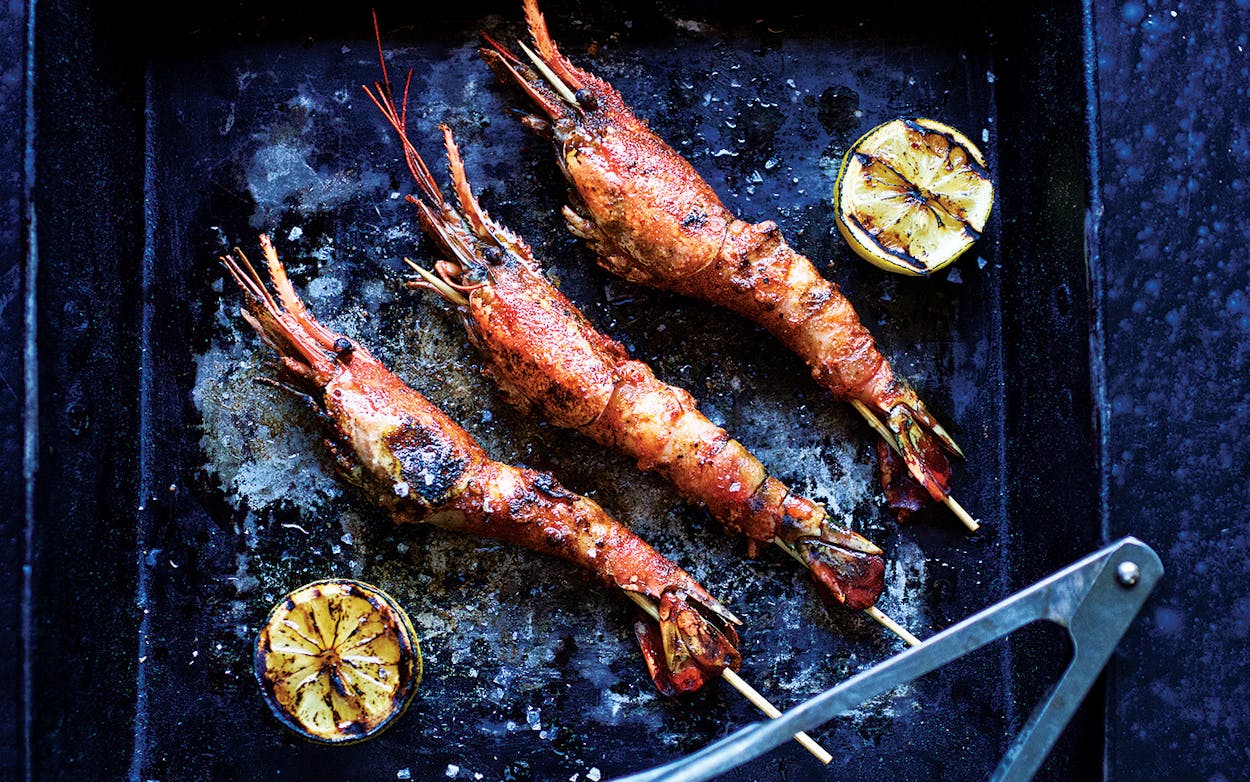There’s an invader trawling the shores of Texas, and woe betide anyone who underestimates it. Named for its striped carapace, the black tiger shrimp (or Asian tiger shrimp or giant tiger prawn or whatever you want to call it) looks like something you’d see on the Carta marina. First documented in our part of the Gulf in 2011, Penaeus monodon can grow up to a foot long. And whether the Indo-Pacific native rode in on hurricanes or surfed floods of ballast water released from cargo ships or busted out of aquaculture operations, its arrival has occasioned much distress. As transgressors are wont to do, it upsets the Gulf’s ecosystem, bogarting resources and gobbling up our local sea creatures, which is alarming for our seafood industry. But where some see devastation, others see dollars. And dinner. We don’t have to celebrate the interloper, but we can heed the advice of the Texas Invasive Species Institute (they’re not sure what to call the thing either): “In order to prevent establishment of the tiger shrimp, it is highly encouraged to catch, sell, or eat the invasive tiger prawn.” In other words, if you can’t beat it, grab your tiger by the tail and eat it.
Procure: As with the tiger shrimp’s fellow ferocious foodstuffs (wild hogs, Asian carp, lionfish), it’s hard to find a wild specimen at grocery stores and seafood markets. What you will find has likely been farmed and imported. And do note that for issues related to health, human rights, and the environment, farmed shrimp are better imported from some places than others. Consult the Monterey Bay Aquarium’s Seafood Watch for sustainable choices.
Prepare: First, watch out for its antennae and pereiopods and swimmerets; it’s a spiky critter. As for cooking, you can approach it the same way you would any shrimp. But thanks to its size and intimidating appearance, it makes a heck of a presentation whole. So, cut down the back of the carapace from the base of the head to the beginning of the tail, remove the shell from the abdomen (leaving the head and tail on), sprinkle the body with Cajun seasoning, and grill for three or four minutes on each side (you can skewer it if you want to keep the tail from curling). The dark, glossy shrimp turns a lovely coral red as it blisters and blackens. And when it’s done, don your bib and tear into it crawfish style. The seasoning livens up the meat, and the head and tail trap the juices and smoky aroma.









